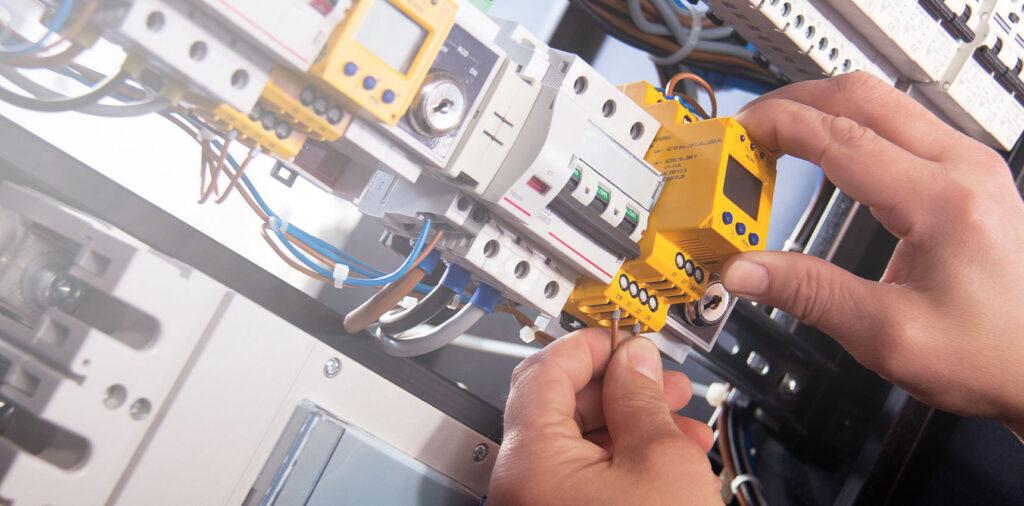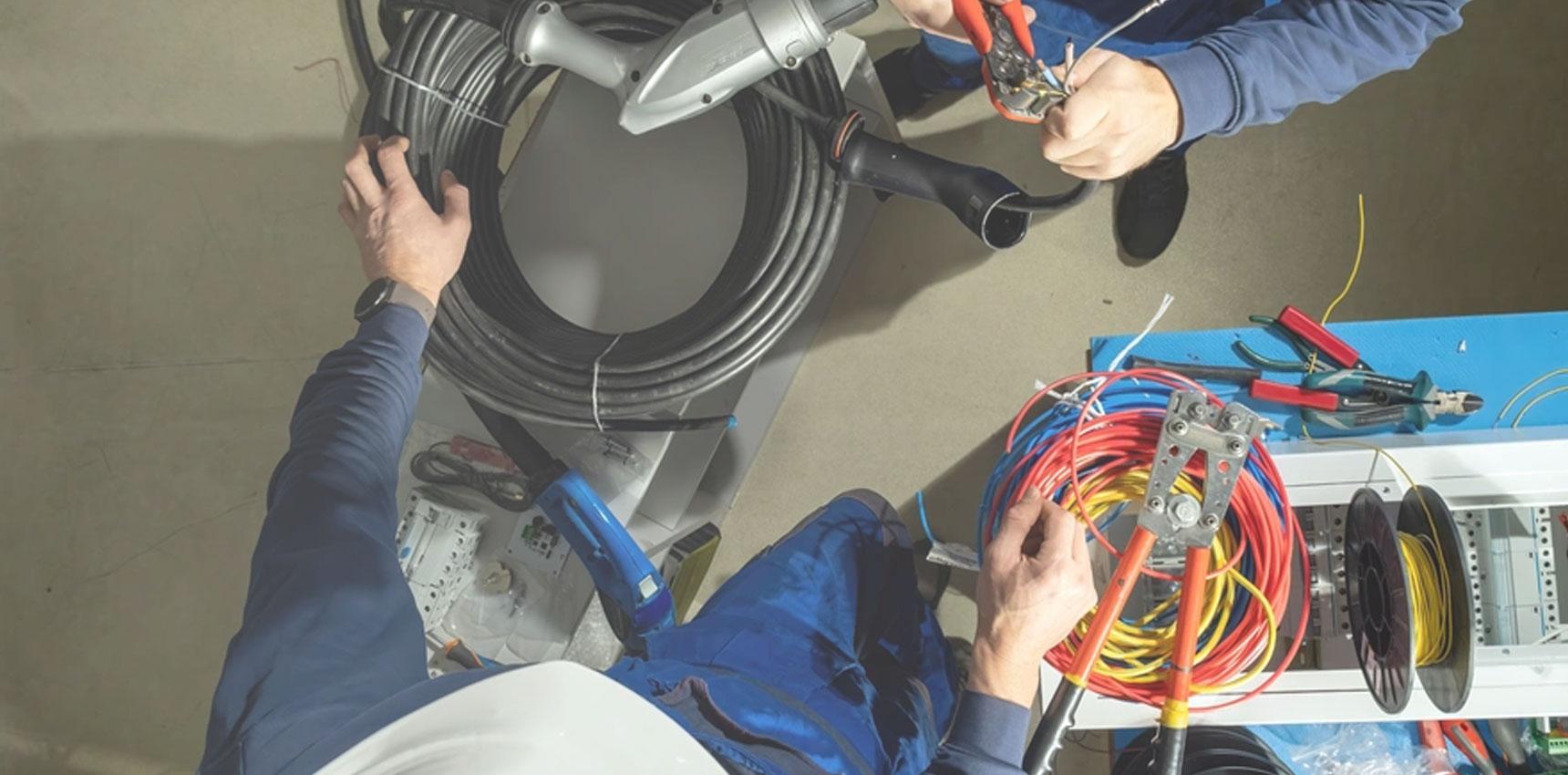Raphael Magnus, Managing Director of Safe Electric, looks at the importance of selecting the correct ACB, MCCB, MCB, RCBOs and bi-directional devices in electrical engineering design and adhering to electrical standards.
There have been many systems over the decades where changes have been made in the selection of a protective device or the incorrect cable size has had a detrimental effect on the system, which can lead to a cascade failure and a lot of damage to those systems.
When designing electrical systems, it is crucial to select the appropriate Air Circuit Breaker (ACB), Moulded Case Circuit Breaker (MCCB) and Miniature Circuit Breaker (MCB), to ensure safety and efficiency. MCBs are available in various types, such as B, C and D, and different breaking capacities, such as 6kA, 10kA and 15kA. This article will discuss the differences between these MCBs and the importance of using the correct one.
ACB and MCCB micrologic devices
ACBs and MCCBs are used in higher power applications and protect against overloads, short circuits and earth faults. Micrologic devices are electronic trip units used in ACBs and MCCBs to provide advanced protection and monitoring features. These devices can be customised to meet specific application requirements and ensure the safety and efficiency of electrical systems. Using the correct devices ensures selecting the appropriate MCB,
ACB and MCCB type and breaking capacity is crucial for the following reasons:
- That the circuit is protected against overloads, short circuits and earth faults, preventing fires and equipment damage.
- Properly sized devices minimise nuisance tripping and ensure that the electrical system operates efficiently.
- Adhering to the guidelines outlined in electrical standards, such as BS 7671 and the Electrical Installation Design Guide by the IET, ensures that the electrical installation meets the required safety standards.
You should always check your source readings and adjust for the worst-case scenario. For example, wet-dry environmental conditions: just because it works in the wet season does not mean it will when the ground is baked dry and the resistivity of the soil increases, or the operational temperatures soar.
Differences between B, C and D Type MCBs
B, C and D-type MCBs differ in their tripping characteristics, which determine how quickly they will disconnect the circuit in response to an overload or short circuit.
- B Type MCBs: These MCBs are designed for general use in residential and light commercial applications. They trip between three to five times the rated current (In) and are sensitive to low-level short circuits.
- C Type MCBs: Suitable for commercial and industrial applications, C-type MCBs trip between five to 10 times the rated current. They are less sensitive to short circuits than B-type MCBs, making them ideal for circuits with inductive loads, such as motors and transformers.
- D Type MCBs: These MCBs are designed for circuits with high inrush currents, such as large motors, transformers and X-ray machines. They trip between 10 to 20 times the rated current and are the least sensitive to short circuits among the three types.
Differences between 6kA, 10kA and 15kA breaking capacities
Breaking capacity refers to the maximum current that an MCB can safely interrupt without causing damage. The higher the breaking capacity, the more robust the MCB.
• 6kA: Suitable for residential and light commercial applications with lower short-circuit currents.
• 10kA: Commonly used in commercial and industrial settings with higher short-circuit currents.
• 15kA: Designed for heavy-duty industrial applications with very high short-circuit currents.
This may not always be the case – you need to check your source reading. If you are close to a transformer, the fault levels can be very high and the Ka level of your device may no longer work – one size does not work for all!
The role of AFDDs in electrical safety
Arc Fault Detection Devices (AFDDs) are critical in preventing electrical fires caused by arc faults. Arc faults occur when there is a breakdown in the insulation of a conductor, which can create a high-temperature arc that ignites surrounding materials. AFDDs are designed to detect these dangerous arcs and disconnect the circuit before a fire can start. Incorporating AFDDs into your design, particularly in high-risk areas such as residential bedrooms, old buildings, or structures with flammable materials, can significantly enhance safety. AFDDs are now recommended or even mandated in certain regions by electrical standards such as BS 7671.
The importance of adhering to standards like BS 7671, including Amendment 3, cannot be overstated. This amendment introduced crucial changes to ensure the safety and efficiency of electrical installations, particularly concerning bi-directional devices in battery storage and PV generation systems. There are many systems out there that have the wrong protective devices fitted and it could take years to find and rectify these, and then only if the inspecting engineer is conversant with understanding and spotting this when an EICR inspection is carried out – this must be urgently addressed and more training is required. These devices must be correctly selected and configured to manage the flow of electricity in both directions, ensuring safe and reliable operation. Failing to comply with these standards can lead to serious consequences, including electrical fires, equipment damage and even potential loss of life.
Never rely on the Max Zs of 1667 for an RCBO
Relying on the Max Zs of 1667 for an RCBO can lead to an unsafe electrical installation. It is essential to design the electrical system to work within the Max Zs of B, C and D curve devices, as specified in the electrical standards. This ensures that all the equipment that makes up your design which includes MCBs, ACBs, MCCBs, RCBOs and unidirectional bi-directional devices will trip within the required time, providing adequate protection against overloads, short circuits and earth faults.
The dangers of not setting parameters properly
Not setting the parameters properly on micrologic MCCBs and ACBs can have disastrous effects, including arc faults and damage to electrical systems. These devices are designed to protect electrical systems from overloads, short circuits and earth faults, but improper settings can lead to catastrophic failures. It is crucial to follow the manufacturer’s instructions and adhere to electrical standards when setting up these devices to ensure the safety and efficiency of the electrical system, and ensuring you follow the design calculations is vital for a safe system.
The misuse and total lack of understanding in the industry – especially by the cowboy element – has led to thousands of badly designed systems that are potentially unsafe and just waiting to cause a problem. It’s now a case of when, not if! Selecting the appropriate, ACB, MCCB, MCB, RCBO or unidirectional/ bi-directional devices and adhering to electrical standards, such as BS 7671 and the Electrical Installation Design Guide, is crucial for designing safe and efficient electrical systems. Electricians must and need to be taught to understand the importance of proper design and adhere to the guidelines to ensure the safety and efficiency of electrical systems.
Finally, it is crucial to set the parameters properly on micrologic MCCBs and ACBs to prevent the potential for ARC faults and damage to electrical systems – setting them at max settings is just a recipe for disaster. More needs to be done in our industry to educate in a way that feels safe to electricians to accept that none of us knows everything and that it is okay to ask. Our education systems are not set up to do this, without charging huge fees to impart vital safety knowledge.
Many electricians are dyslexic or have trouble grasping maths. They are great installers, yet there is no safe way out there where they can learn without feeling like they are being put on the spot or fear being ridiculed, which means they continue making the same mistakes through lack of knowledge. Governing bodies and leaders need to address this in a way to reduce the anguish and mental stress caused by being put in the spotlight.
It would be beneficial to have a free refresher course available for the complex area of mathematics, which needs to be used properly almost every day in our industry. This applies to all levels, from apprentice upwards. If we don’t use it for years or decades, we tend to forget. This, along with practical examples of how to apply the maths, such as resistors in parallel, serves as a valuable lesson in reading insulation resistance that can significantly advance this industry.
Written by Raphael Magnus of Safe Electric for ECN Electrical Contracting News. Safe Electric are members of The Local View Peterborough.





